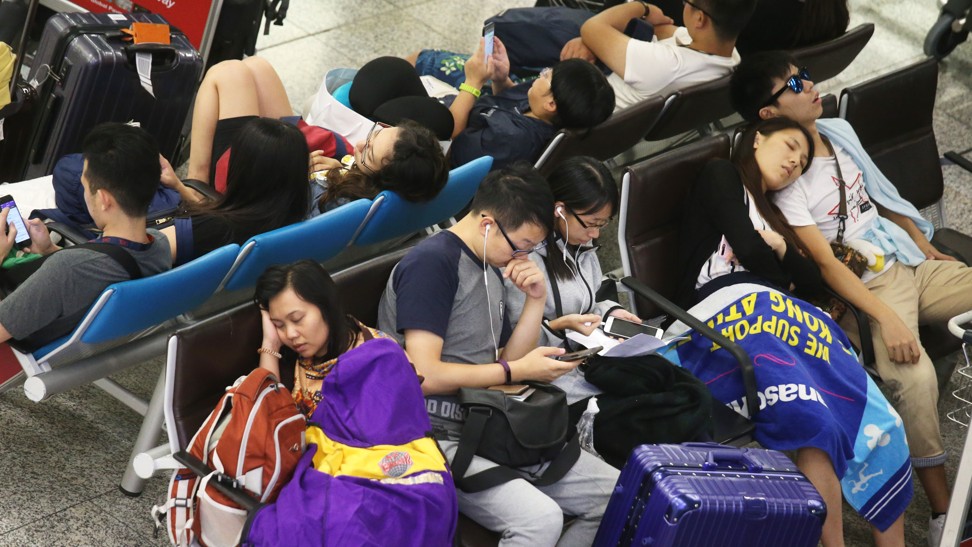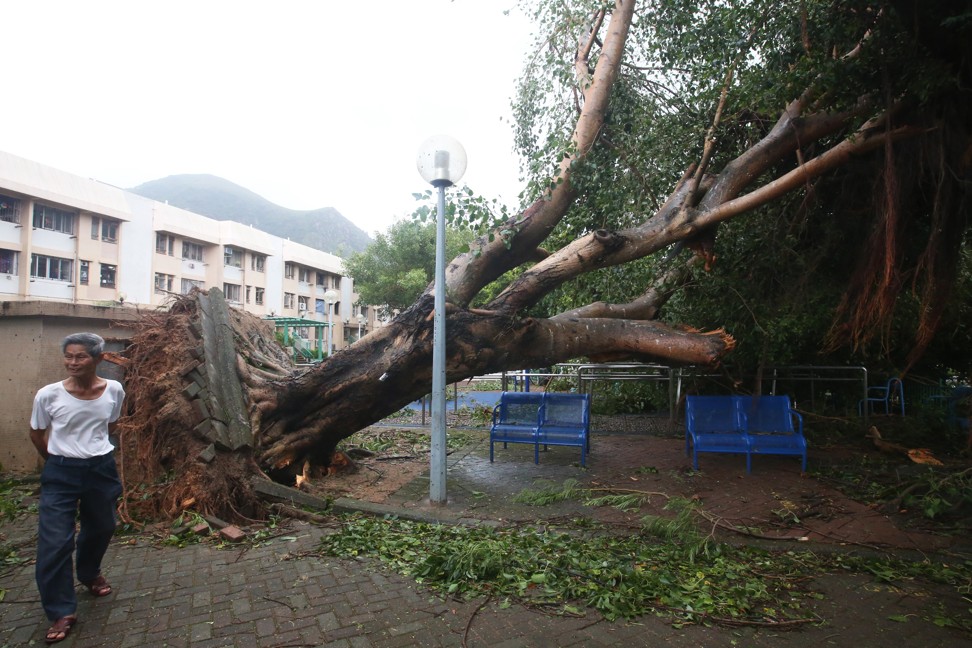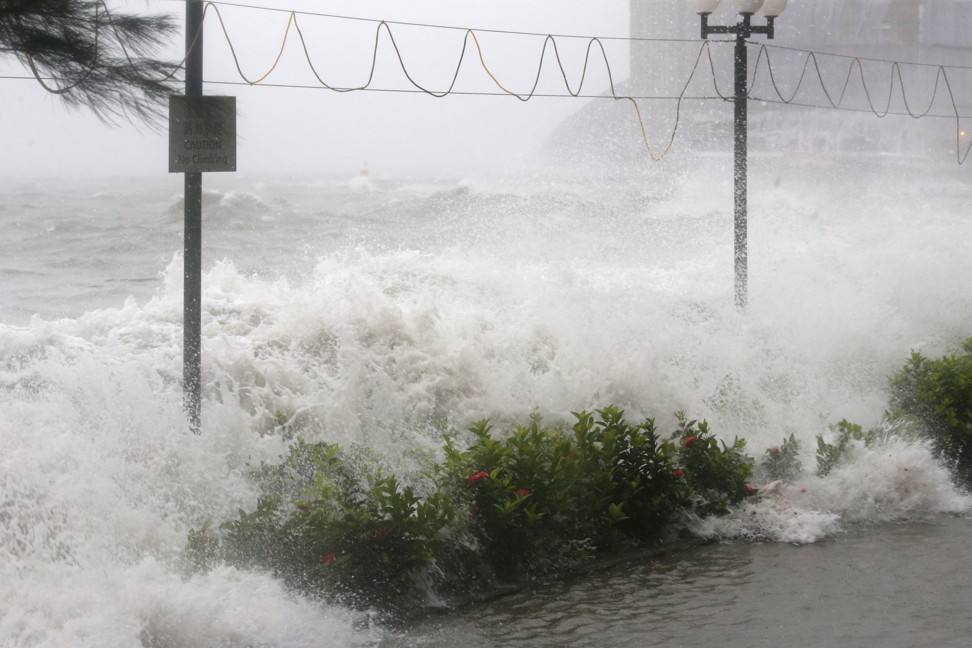
Battered Hong Kong cleans up after killer Typhoon Hato pounds region
Signal No 10 storm paralyses city with flights cancelled, billions of dollars lost and widespread flooding, while five people die in Macau
The No 10 signal was raised shortly after 9am, when the centre of the storm was within 80km of Hong Kong, and stayed in force for five hours as Hato, the Japanese word for pigeon, besieged the city with torrential rain and hurricane force winds.
As of 5pm on Wednesday, 480 flights had been cancelled at Hong Kong International Airport, one of the region’s busiest cargo and passenger hubs, and around 600 take-offs and landings were scheduled until 6am on Thursday.

In a rare move, the Airport Authority said it was keeping its two runways open to handle the backlog overnight.
Other airports in the region were not spared either – 270 flights were cancelled in Shenzhen, 130 in Zhuhai and 25 in Guangzhou.
Power supplies were disrupted from Zhongshan to Foshan on the mainland, while a power cut plunged Macau’s famed casinos into darkness for hours.
Five people were killed and more than 150 injured in the former Portuguese enclave.

As Hato swept past the south of Hong Kong, 121 people sought medical treatment at public hospitals, while 380 had to seek refuge at temporary shelters.
The Government Flying Service scrambled four helicopters in eight rescue operations, plucking to safety 39 crew members from stranded cargo ships southwest of the city.
At its peak, Hato was packing gusts topping 193km/h, making it stronger than Typhoon Vicente, the last storm to trigger a No 10 warning signal.

There were nearly 700 reports of fallen trees, among them a 150-year-old heritage Chinese banyan on Tsim Sha Tsui’s Park Lane shopping boulevard.
Floods inundated low-lying and coastal areas. Dozens of residents had to be evacuated from the fishing village of Tai O, where sea swells surged up to 3.85 metres high.
“Typhoons have flooded my house two or three times in the past 20 years I’ve lived here, but this definitely has been the worst,” Li Kwok-ping, a resident of coastal Lei Yue Mun, said.
“We tried to stop the waves from coming into our house with wooden boards, but it was no use.”
The internet was abuzz with photos and videos of the storm, including one that went viral of a work gondola dangling precariously from a residential block in Hung Hom and smashing into a flat window.
As Hato moved further inland across southern China, the No 10 signal was replaced by No 8 at about 2pm, and all signals were cancelled by 8.20pm.

Macau-based meteorologist Clarence Fong Chi-kong said that the typhoon track passing the south of Hong Kong meant Hato spent more time over water, allowing it to pick up more force. Most typhoons in recent years have approached from the east and packed less of a punch.
Professor Johnny Chan Chung-leung of City University, said Hato’s impact on storm surges was the most significant.
“As a typhoon approaches, pressure drops and wind speeds pick up, leading to a storm surge at sea.” he said.
“[Hato’s] storm surge happened to coincide with the [high] tide at noon. This kind of phenomenon occurs, but is very rare.
“By the end of the century, Hong Kong’s sea level is estimated to rise by at least a metre. The risk of severe floods is only going to be greater.”

